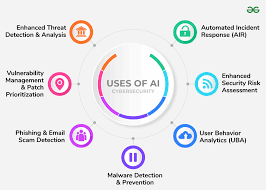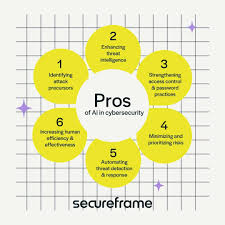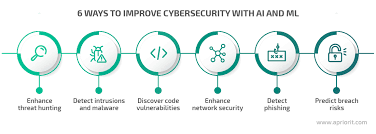
Introduction
As cyber threats continue to evolve in complexity and frequency, traditional security measures are often inadequate in protecting against the sophisticated attacks of today’s digital landscape. This is where Artificial Intelligence (AI) has come into play, providing advanced solutions to enhance cybersecurity strategies. AI-driven cybersecurity solutions leverage the power of machine learning, data analysis, and automation to detect, prevent, and respond to cyber threats with greater speed and accuracy.
The integration of AI technologies into cybersecurity allows organizations to stay ahead of cybercriminals, effectively identifying vulnerabilities before they can be exploited. By analyzing large volumes of data in real-time, AI systems can identify patterns, predict potential risks, and automate response actions—fundamentally transforming the way security teams approach cyber defense.
1. Threat Detection and Prevention
AI models, particularly machine learning (ML) algorithms, can analyze vast amounts of network traffic and identify patterns that indicate potential threats. They are capable of detecting previously unknown vulnerabilities and anomalies in real-time, making them more effective than traditional rule-based systems.
- Anomaly Detection: AI systems continuously learn from network data, allowing them to identify unusual behaviors that may indicate malicious activity, such as unauthorized access or data exfiltration.
- Signature-based Detection: AI can be used to enhance signature-based systems by identifying new variants of malware that traditional systems might miss.
2. Automated Incident Response
AI can help automate the incident response process, reducing the time required to contain and remediate security breaches.
- Autonomous Actions: In the event of a detected threat, AI can take immediate actions, such as isolating affected systems or blocking malicious IP addresses, without waiting for human intervention.
- Decision-making Support: AI can also assist security teams by providing recommendations based on past incidents and current data, speeding up decision-making processes.
3. Predictive Analytics
Using historical data, AI can predict potential future threats by analyzing trends and identifying patterns that precede attacks.
- Threat Intelligence: AI tools can aggregate threat intelligence from multiple sources to offer predictions about emerging cyber threats, allowing businesses to take proactive measures.
- Risk Assessment: AI can continuously assess risk and provide organizations with insights into areas of vulnerability that need attention.
4. Behavioral Analysis
AI-driven behavioral analytics can be used to establish baselines for users, systems, and devices, making it easier to detect deviations that could indicate malicious intent.
- User and Entity Behavior Analytics (UEBA): By monitoring the behavior of users and devices, AI can flag suspicious activities, such as sudden access to sensitive data or abnormal login locations.
- Insider Threat Detection: AI excels at identifying insider threats by analyzing behavioral patterns within an organization and detecting signs of data misuse or sabotage.
5. Security Automation and Orchestration
AI-powered security automation platforms help streamline security processes by integrating various tools, improving overall system efficiency.
- Workflow Automation: AI can automate repetitive tasks, such as patch management or log analysis, reducing the workload on security professionals and minimizing human error.
- Orchestration: AI can synchronize security tools across an organization, enabling a coordinated response to incidents, improving overall security posture.
6. AI-Driven Endpoint Protection
AI is used in endpoint protection to detect and block threats across devices connected to the network.
- Malware Detection: AI systems are designed to analyze and detect malware in real time, using machine learning algorithms to distinguish between safe and harmful files.
- Zero-Day Attack Prevention: AI can quickly identify and respond to new, previously unknown threats by analyzing suspicious files and behaviors.



Conclusion
AI-driven cybersecurity solutions are rapidly reshaping how organizations approach security. With the ability to detect threats faster, predict future attacks, automate incident responses, and improve overall network resilience, AI is a critical asset in modern cybersecurity strategies. As cyber threats continue to evolve, leveraging AI’s power will be essential in staying ahead of malicious actors.

